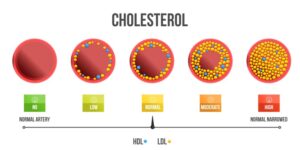5 Ways Technology is Helping Fleets Reduce Accidents

Fleet accidents are a major concern for businesses because they can result in expensive downtime, injuries, fatalities, and lawsuits. Luckily, there is growing evidence that technology can be used to effectively reduce fleet accidents and improve safety. Below, we discuss five technologies that are helping to reduce fleet accidents.
Telematics
Telematics refers to a system of technologies, including sensors, GPS, and software, that collect data about drivers and vehicles. The data can be used by fleet managers to identify risky driving habits and put measures in place to prevent them. For example, if a driver tends to speed, they can be placed on a speed management course and given sanctions for violating best practices.
Driver Monitoring Software
Driver monitoring software (DMS) uses sensors and cameras, like the Azuga dashcam, to monitor inside the vehicle. The DMS can pick up on risky habits including impaired driving, not using a seatbelt, distractions, and drowsiness.
When the DMS identifies a risky behavior, it can alert the driver to make swift changes. After all, fleet drivers spend a long time on the road, and they may not realize they’re making dangerous choices. As well as sending alerts to drivers, the DMS can notify fleet managers, which allows them to investigate further.
Fleet Management Software
Fleet management software (FMS) helps fleet managers track their fleet and drivers. FMS is highly scalable, meaning businesses can choose which features to use. Common features include compliance reporting, route optimization, fuel management, driver performance monitoring, real-time vehicle tracking, and maintenance scheduling. All of these features can be used by fleet managers to reduce accidents throughout their workforce.
Collision Avoidance System
Collision avoidance systems (CAS) are a collection of technologies that rely on software and sensors to detect potential hazards on the road, which can improve driver reaction time and prevent accidents. Common CAS features include:
- Cross-traffic alert. This tells the driver if there’s traffic coming from the side when reversing.
- Lane departure warning. This alerts the driver if they’re straying out of their lane.
- Automatic emergency braking (AEB). If collisions are imminent, AEB automatically applies the brakes.
- Blind-spot monitoring. Collisions involving large trucks often occur because motorists lurk in the blind spot. This system reduces these types of collisions by letting the driver know when the blind spot is all clear.
- Adaptive cruise control. This helps drivers keep a safe distance from the vehicle in front, even if they change speed.
Vehicle Maintenance Solutions
Poorly maintained vehicles are a safety risk to fleet drivers and other motorists. Having a regular vehicle maintenance schedule in place can help save lives, reduce costs, and improve efficiency. There are many ways that technology can help with maintenance, including predictive maintenance, which uses artificial intelligence and machine learning to analyze vehicles and predict future maintenance needs.
Technology can help fleets reduce accidents by tracking driver behavior, monitoring vehicle performance, and scheduling preventative maintenance. Even though this technology can be costly to implement, the long-term operational cost will be reduced considerably.









